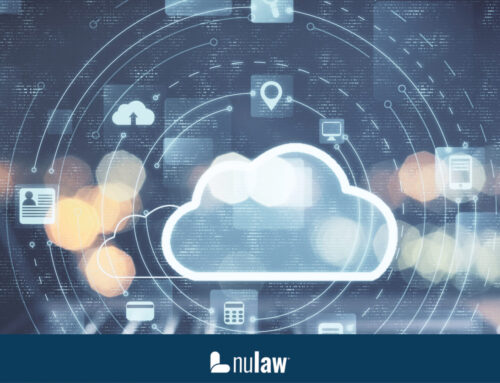Popular Tags

3 Examples of How Big Data is Changing Law Practice
It would hardly be appropriate to refer to NuLaw as a big data application for law firms. However, much of what is accomplished by our case management application is driven by data. In fact, NuLaw is built on top of the popular Salesforce CRM application – which is also data-driven.
Why all this talk about data? Because data is driving the future of every industry. Big data is especially important in a day and age in which it is possible for us to generate exponentially more data than we can practically use. The task for companies like ours is to figure out how to make better use of the data we do collect.
It is possible that none of this makes sense to you. As an attorney, your area of expertise is practicing law. Fair enough. Here are three examples of how big data is changing law practice, referenced from a November 19 article published by the Legal Executive Institute:
1. Automated Rate Setting
First up is a well-known law firm that streamlined its rate setting via data analytics. The firm had always relied on a committee to set rates for the new year using an application written into the dashboard of the firm’s software. Members of the IT department knew what kind of data the committee wanted, so they programmed the app accordingly.
Over several years, the IT team figured out that just 24 of the 65 metrics the committee was interested in accounted for 94% of the information necessary to set rates. They then devised a computer algorithm to analyze those metrics and automatically calculate new rates.
It turns out that the computer algorithm can do in seconds what it took the committee weeks to do. Just by crunching data and analyzing it against established metrics, the IT team was able to automate rate setting.
2. Better Task Code Entries
Next up is a firm that was having difficulty producing budgets across all its practice areas. At the heart of their problems were improper and missing task codes. Not utilizing proper task codes made it impossible to produce accurate time entries, therefore making it extremely difficult to meet client expectations when preparing budgets.
A solution to the problem was found in a new data application leveraging machine learning and Bayesian inference to ‘teach’ a computer how to properly code tasks. The application was even able to produce new codes for tasks that did not have an existing code set. Ever since, the firm’s task coding has been more accurate and timely.
3. Better Use of Public Records
The third example comes out of the UK, where attorneys who specialize in real estate transactions must comb through mountains of data maintained by the government’s Land Registry. Normally, individual ownership records must be downloaded as PDF files and reviewed manually by attorneys. Big data changes that.
The firm cited in the report turned to a big data application that connected their computers directly to Land Registry systems. Moreover, the application accessed Land Registry data in bulk, analyzed it in real-time, and produced a portfolio of relevant data ready for download.
Implementing the big data solution dramatically reduced the amount of time attorneys spent pouring through records. The computer system does all the heavy lifting and delivers a concise portfolio of information that is instantly useable.
Big data is at the heart of modern business. It has made its way into the legal sector as well. And because it has, applications like NuLaw are capable of doing more – so that attorneys can concentrate on their clients.


